C1913 Delft Peace Palace Commemorative Plate De Porceleyne Fles Leon Senf
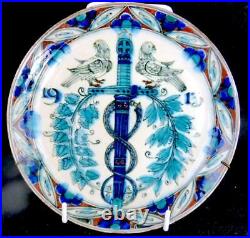


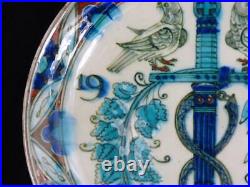
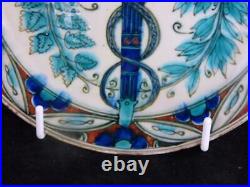
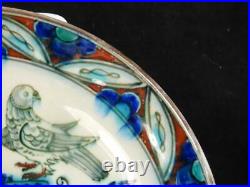
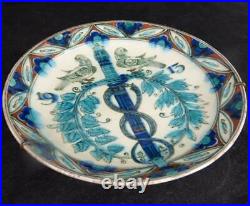

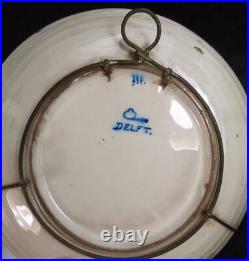


C1913 DELFT PEACE PALACE COMMEMORATIVE PLATE DE PORCELEYNE FLES LEON SENF. An antique De Porceleyne Fles Delft pottery plate produced to commemorate the foundation of the Peace Palace in Holland.
Well hand painted in enamels. Please note the plate is mounted with wire plate hanger that has been soldered together. The idea of the Palace started from a discussion in 1900 between the Russian diplomat Friedrich Martens and American diplomat White over providing a home for the Permanent Court of Arbitration (PCA). White described his idea to Carnegie: A temple of peace where the doors are open, in contrast to the Janus-temple, in times of peace and closed in cases of war...
As a worthy testimony of the people that, after many long centuries finally a court that has thrown open its doors for the peaceful settlement of differences between peoples. Were such a fabric to be created, men would make pilgrimages from all parts of the civilized world to see it.
It would become a sort of holy place, prized and revered by thinking men throughout the world, and to which, in any danger of war between any two countries, the minds of men would turn naturally and normally. The main difficulty now is that the people of the various nations do not really know what was done for them by the Conference; but such a building would make them know it. It would be an "outward and visible sign" of the Court, which would make its actual, tangible existence known to the ends of the earth Andrew Dickson White to Andrew Carnegie, 5 August 1902.
Painted markings to base underglaze blue. Measures 23.5cm 9 1/8 diameter.(measurements and weights where specified are approximate). Small chip to rim and rubbing to rim in places. Please gauge condition using photos provided. Please scroll down for more photos and information.
To keep up to date on our new listings. View Our Other Items For Sale. To browse our currently available items.
We will do our best to fulfil your query. Our items are packed professionally within double wall corrugated cartons. We always use generous amounts of packaging, padding and bubble wrap. We will work with you and help you to the best of our ability. Please message us and we'll make sure this is done.
This is not always possible due to weight / size restrictions. We welcome customers from the UK and across the globe. We hope to do business together soon.
Thank-you for reading and have a very good day. Auctiva offers Free Image Hosting and Editing. The item "C1913 DELFT PEACE PALACE COMMEMORATIVE PLATE DE PORCELEYNE FLES LEON SENF" is in sale since Tuesday, September 24, 2019.
This item is in the category "Pottery, Porcelain & Glass\Pottery\Delft". The seller is "buckinghamshire_antiques" and is located in High Wycombe. This item can be shipped worldwide.- Date Range: 1900-1919 (Art Nouveau)
- Material: Ceramic
- Original/Reproduction: Antique Original
- Product Type: Plate
- Use: Decorative
- Year of Manufacture: 1913
